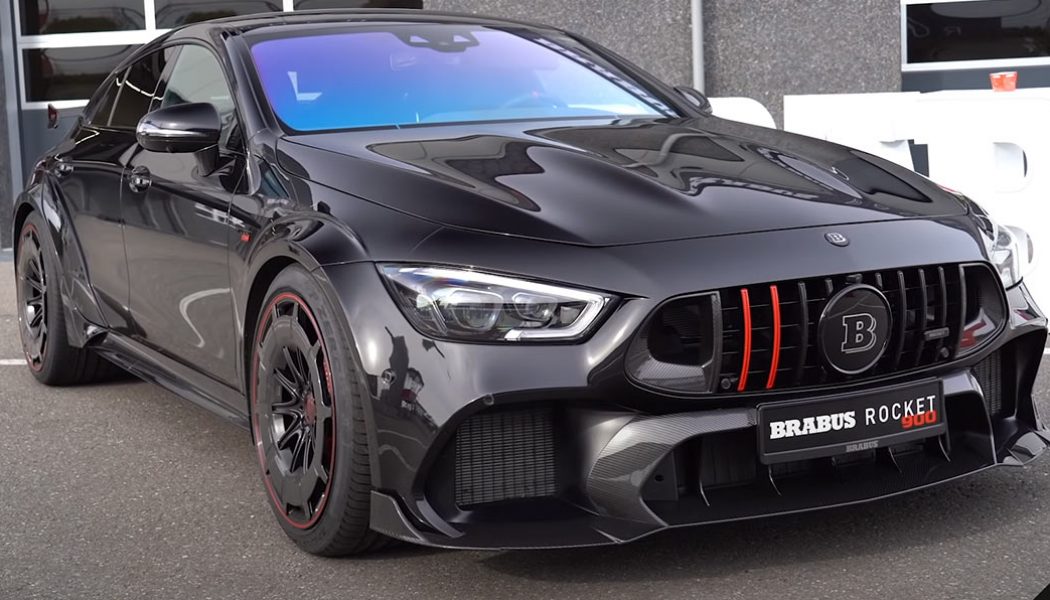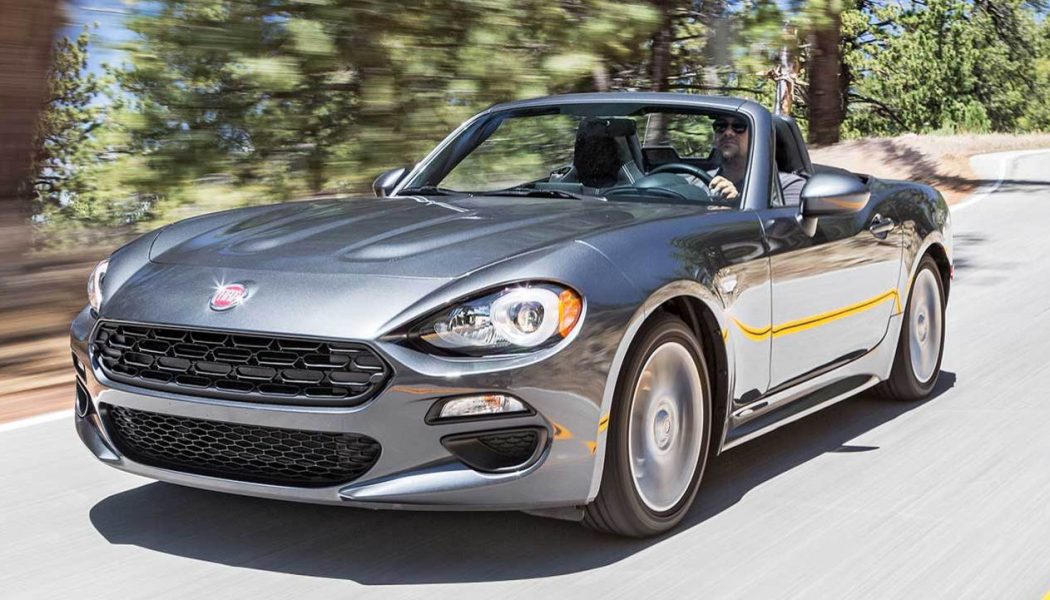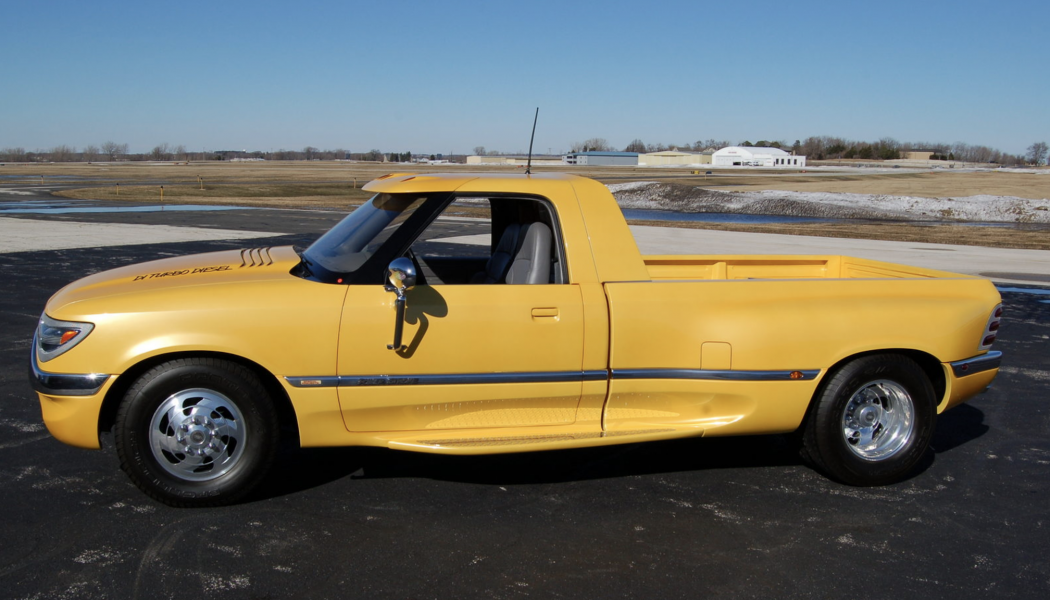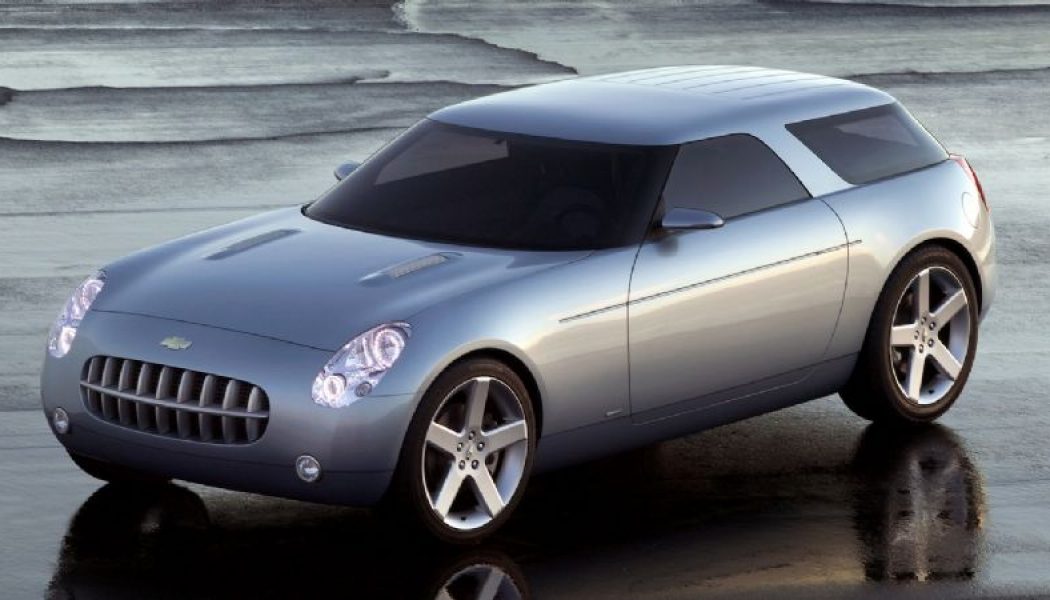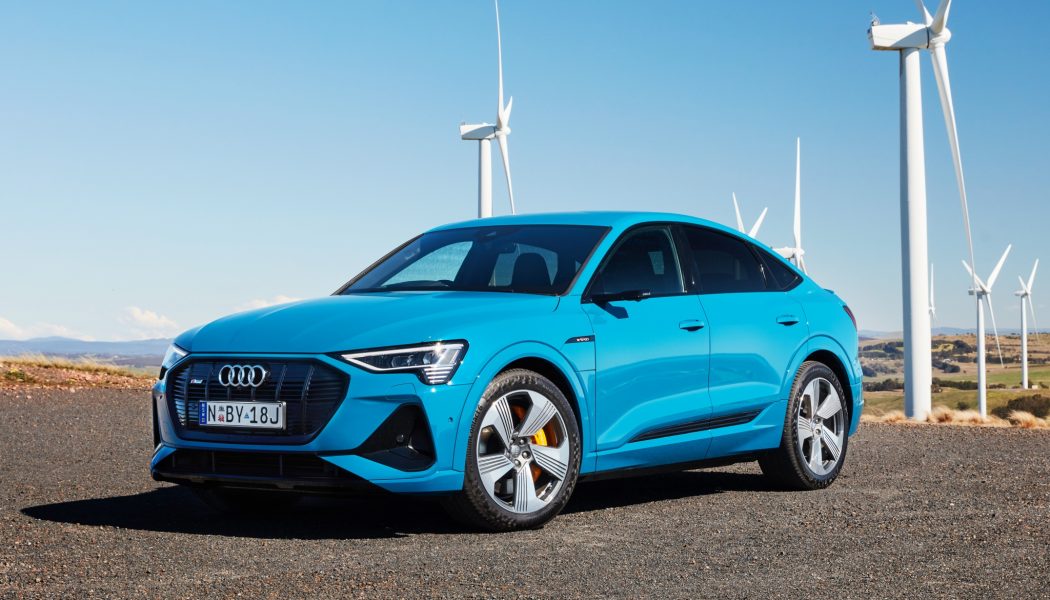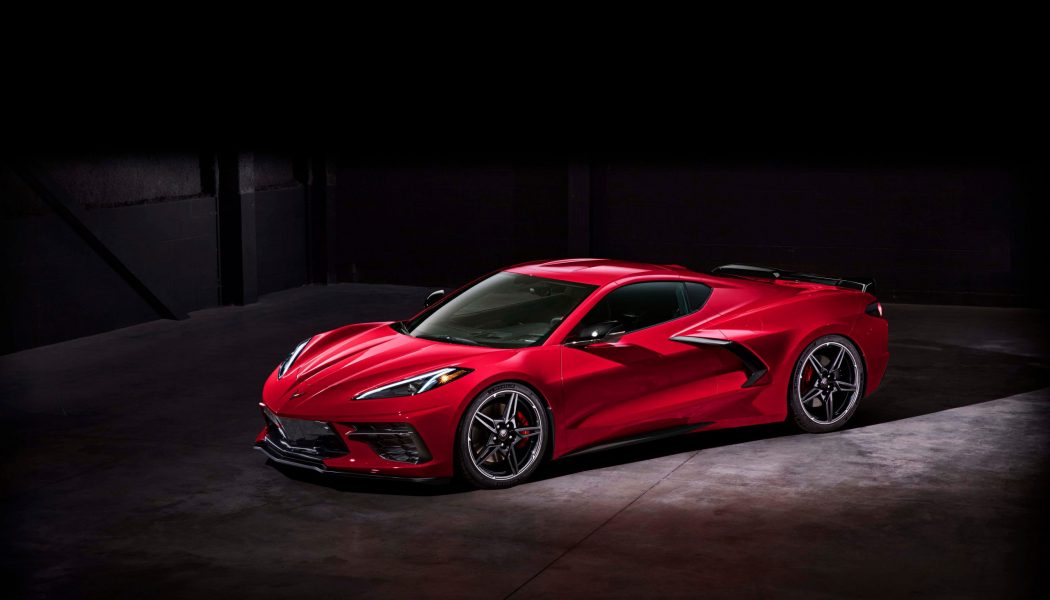Classic Cars
The History of the Jeep Grand Wagoneer
Although luxury trucks are a key profit center for modern automotive manufacturers, there was a time when only a single brand on the American market was brave enough to make the leap from ski station to valet station. It was the early ’80s when AMC decided to go all-in on an aging platform by transforming its already decades-old Wagoneer into the Grand Wagoneer and open up an entirely new segment for U.S. buyers. The Jeep Grand Wagoneer beat the (still Spartan but nevertheless high-priced) Range Rover to the American market by a handful of years, and while Land Rover was able to outlast its underfunded rival in the long run, as contemporaries there was no question who was first, and in the minds of many sport-utility fans, who also did it better. Ancient Roots A bit of backstory firs...
1981-1988 Chevy Monte Carlo: 60% of the Time, Driving One Worked Every Time
The Chevrolet Monte Carlo is like your dad. Chances are you think of it in its later years—uncool, unremarkable, and incapable of getting a second look from the hottie that your mom once was. No question, the 1995-2007 front-drive Monte Carlos were about as uptight as a car could possibly be. But the earlier Montes—1970-1988, and particularly the 1980s cars—now those were hot stuff for young Cassanovas like your dad. Birth of the Chevrolet Monte Carlo The Monte Carlo first appeared for the 1970 model year as a follow-on to Pontiac’s first “personal luxury” car, the Grand Prix. The Grand Prix was the brainchild of John Z. DeLorean, who by this time was running Chevrolet, though he wasn’t involved in the Monte’s development. The latter was a response to new tren...
A Beautiful Mistake: Lancia Should Have Built the 2003 Fulvia Concept
At the time of this writing, Lancia—one of the greatest automakers of all time, with a history of racing success and great driver’s cars—currently produces just one vehicle. The Lancia Ypsilon is a homely little hatchback that’s been on sale since 2011 and is powered by a range of eensy little engines, including a 0.9-liter inline-two. This situation comes after several years of parent company FCA foisting rebadged Chrysler products on Continental buyers, including the Lancia Thema (neé Chrysler 300). Such cynical badge jobs made a mockery of the brand’s heritage, but it didn’t have to be this way. At the 2003 Frankfurt Auto Show, the company showed off the Fulvia Concept, an homage to one of the company’s finest-ever enthusiast cars and a triumph of the era&#...
Ford’s Power Stroke Concept Truck Is the Epitome of ’90s Americana
Ford’s rounded 1995 Explorer was still nearly a year away from launch in 1994, but the Blue Oval’s Power Stroke concept pickup gave clues to the company’s styling directive for the cars, trucks, and SUVs it planned to sell to consumers throughout the latter half of the 1990s. Besides showcasing the brand’s forthcoming design language, the Power Stroke housed Ford’s upcoming turbo-diesel 7.3-liter V-8 engine, which would soon make its way to production bearing the—wait for it—Power Stroke moniker. Despite its show-car status, the Power Stroke concept was surprisingly road-ready. Riding on a modified heavy-duty truck frame and featuring an interior cribbed from an F-Series pickup of the era, the truck’s only true conceptual elements lived on its yello...
Chevrolet Should Have Made the Nomad Concept a Reality
Before the Great Recession threw a wrench in its plans, General Motors seemed intent on competing in the affordable sports car segment with its rear-drive Kappa platform beyond the short-lived Pontiac Solstice and Saturn Sky (as well as international variants of the latter from the likes of Opel and Daewoo). Thanks to the market crash, we’ll never really know what would have been. That said, we do know the company teased the possibility of a small two-door wagon for the Chevrolet brand at the 2004 Detroit auto show. Christened the Nomad, the rear-drive concept drew some inspiration from the Corvette-based concept car that donned the same name a half of a century earlier (and less from the Camaro-based 1999 Nomad concept). See all 11 photos Power for the reborn Nomad concept...
Nissan MID4 and MID4-II: The Mid-Engined Supercars That Almost Happened
The above car might look like a discarded design study for the Acura NSX, or maybe an unlicensed BMW M1/Ferrari Testarossa mashup, but it’s actually the second of two intriguing performance-oriented concept cars that could have sent Nissan on a very different halo-car trajectory. The MID4-II, as the white car is known, has a cleaner and more modern look than its predecessor, the thoroughly mid-1980s MID4. But both were more than mere concepts, seriously considered for production and predating the eventual Acura NSX. And they’re worth knowing about if you want to know why the Z car evolved as it did. Skipping to the end before the beginning, the MID4s ended up as dead ends. Nissan’s performance future evolved on a few fronts: the affordable Silvia/240SX, the 300ZX that ado...
Muscle Cars Compared: 1968 Mustang vs. Camaro, Firebird, Cougar, Barracuda, and Javelin!
Back in 1968, they called them “sporty,” but for the six pack of cars Motor Trend editors tested for the January 1968 issue—the Ford Mustang, Chevy Camaro, Plymouth Barracuda, Pontiac Firebird, AMC Javelin, and Mercury Cougar—muscle car is now the far more appropriate term. Interestingly, of the nameplates featured in the story we’ve pulled from the MotorTrend archives and recreated below, only two still are still available today, and four of the brands that built them no longer survive. From MotorTrend Magazine, January 1968 Regardless of when it started—1954 or 1964—the sports/personal market has finally resolved itself, and at this moment, as impressive as its growth has been, the peak is still nowhere in sight. While the rest of the world is strung out on “unifi...
Prances With Horse: The History of the Ferrari Logo
When presented with a car like the 986-horsepower, 211-mph plug-in hybrid SF90 Stradale, it’s easy to forget the high-tech, hypercar-building Ferrari of today got its start not long after cars started edging-out horses for daily transportation needs. In the years since, the Ferrari marque has gone through many cycles and changes, not the least of which have been changes to the Ferrari logo itself, the famed Prancing Horse. Origin of the Ferrari Logo The Ferrari Cavallino Rampante, or Prancing Horse, has been traced to origins as ancient as 1692, when a similar design was found on the regimental banner of the Royal Piedmont Regiment of the Duke of Savoy, Vittorio Amadeo II, by the Museo del Marchio Italiano. As Ferrari itself tells the tale, the marque’s eponymous founder, Enzo ...
Cyberpunk 2077’s Dystopian Quadra Sports Car Becomes Reality
Drink too many Rockstar Energy drinks while playing video games and you just might find yourself confusing the digital world with the real one. That’s one theory behind the creation of this video game car come to life. Another is that it simply looked too rad to leave to the virtual realm. Dubbed the Quadra, this seemingly post-apocalyptic sports car cribs its name and styling from vehicles featured in the upcoming (and highly anticipated) video game Cyberpunk 2077, an open-world action title set in a dystopian city. Credit Rockstar Energy’s Rockstar Performance Garage for bringing the Quadra to life. See all 27 photos Starting with a low-mileage (just 37,000 miles!) 1970 Ford Mustang fitted with a 4.9-liter V-8, the team at the Rockstar Performance Garage made myriad updates t...
Scrap the Small-Block V-8 Swap and Sub in This Literal Tesla Crate Motor
The term “crate engine” has long been used to describe engines you could buy (typically hotted-up or modified) and install in the car or project of your choosing. Why the name, though? Because the engines ship in crates. Often, the word “engine” is used interchangeably with the word “motor,” a casual oversight of the distinction between an internal-combustion engine and a motor, which we typically use to describe an electric power source. Until now. Go ahead and call EV West’s Revolt Systems Tesla electric powertrain swap what it is: A crate motor. Literally, that’s what this wonderful creation is. A crated electric motor. Even better, it’s a bolt-in setup gunning to replace one of the most common crate engine choices out there, GM...
One-Owner 1997 Toyota Supra Turbo Looks Great in Green
There were never many 1990s-era Toyota Supra Turbos roaming the streets, expensive as it was new, and two decades later there are even fewer. Then, winnow out the abused, wrecked, modified…you get the idea. A clean A80 is rare. One in an unusual color combination, and an anniversary model no less, is rarer. That’s why drawing your attention to this one-owner 1997 Toyota Supra Turbo, unmolested and unmodified, is worthwhile. The deep green paint and light tan interior are a classic color combination, and the fat chrome five-spoke wheels are original and correct. Under the long, shapely hood sits a twin-turbo 3.0-liter inline-six—the legendary 2JZ-GTE—good for 320 hp and 315 lb-ft of torque. The engine’s two turbos are not in any conventional configuration, either. Twin sequentia...
From the Archives: Detroit Mid-Engine Sports Cars Are Coming
Back in our December 1969 issue, we ran a story highlighting Ford and Chevrolet’s skunk works effort to develop new mid-engine supercars. With both automakers now finally offering mid-engine sports cars to the public, the Ford GT and the 2020 MotorTrend Car of The Year-winning 2020 Chevrolet Corvette, we thought it’d be fun to dive back into this old magazine story. Detroit’s in the grip of mid-engine mania. Again, there’s said to be a mid-engine Corvette in the works, for 1972 or perhaps ’73. Ford may force Chevy’s hand with a new mid-engine machine to compete head-on with the invincible ‘Vette and, even if Dearborn defers building its own, they recently signed a deal with Alessandro de Tomaso, maker of one of today’s finest mid-engine sport...


